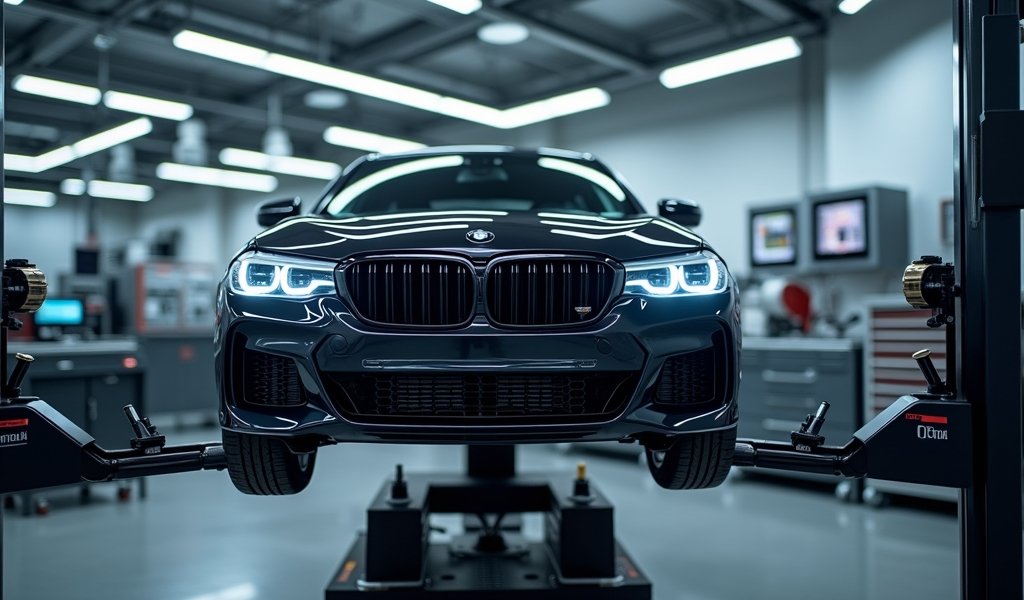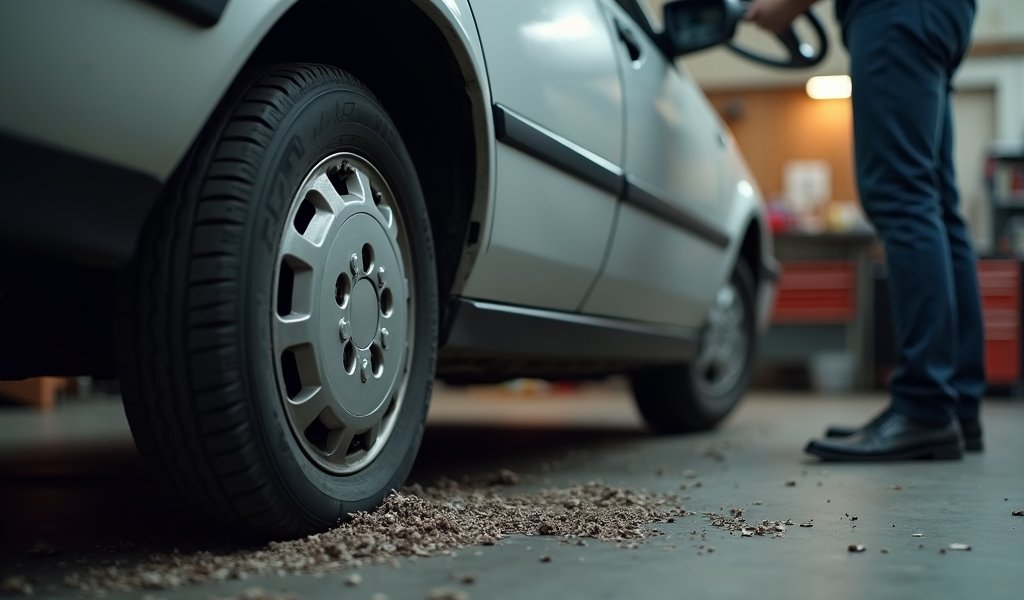Overview
This article explains toe alignment as the inward or outward positioning of vehicle tires, emphasizing its critical role in vehicle handling, safety, and tire longevity. It covers manufacturer-specific alignment ranges, warning signs of misalignment, maintenance practices, and the relationship between toe and other alignment parameters (camber and caster), while comparing professional alignment services with DIY methods.
Table of Contents
- What is Toe Alignment?
- Understanding Your Vehicle’s Specific Toe Range
- Recognizing Signs of Improper Toe Alignment
- Professional Alignment vs. DIY Adjustments
- Maintaining Proper Toe Alignment
- Toe Alignment’s Relationship to Other Parameters
- Conclusion
- Frequently Asked Questions
When it comes to keeping your vehicle running smoothly and safely, toe alignment specification range isn’t just mechanic jargon—it’s a crucial aspect of your car’s overall health. As someone who’s spent decades under the hood, I can tell you that proper wheel alignment makes all the difference between a car that handles like a dream and one that fights you at every turn.
Toe alignment might sound technical, but it’s actually pretty simple. It refers to how your tires are positioned relative to each other. Get this wrong, and you’ll be shopping for new tires sooner than you’d like—not to mention dealing with a car that doesn’t want to drive straight.
In this guide, I’ll walk you through everything you need to know about toe alignment specification ranges in everyday language. No confusing technical terms, just practical advice from someone who’s aligned thousands of vehicles. Let’s dive in!
What is Toe Alignment?
Imagine looking at your car from above. Toe alignment refers to whether your tires are pointed slightly inward toward each other (toe-in) or slightly outward away from each other (toe-out). It’s similar to how people might walk with their toes pointed in or out.
When we talk about toe specification range, we’re referring to the acceptable measurements that your vehicle manufacturer has determined will provide the best handling, stability, and tire wear. These specs are measured in either degrees or fractions of an inch, and they’re surprisingly precise.
Different vehicles have different needs:
- Passenger cars typically want a toe setting between -0.2 to +0.2 degrees
- SUVs and trucks often need a bit more toe-in at +0.1 to +0.3 degrees
- Performance vehicles might have specialized settings for sharper handling
- Commercial vehicles usually require more toe-in for stability when carrying heavy loads
Getting your toe alignment right is like wearing properly fitted shoes—everything just works better. Your steering will feel responsive but not twitchy, your vehicle will track straight without wandering, and your tires will wear evenly across the tread.
The right toe setting creates the perfect balance between stability, handling, and tire longevity. Too much toe-in, and your tires will wear on the outside edges while the car feels sluggish during turns. Too much toe-out, and you’ll see inner edge wear with a car that feels nervous and darty.
Understanding Your Vehicle’s Specific Toe Range

Each vehicle has its own personality, and the toe alignment specifications reflect that unique character. Finding the right specs for your particular make and model is your first step toward optimal alignment.
Here’s how to find your specific toe alignment specification range:
- Check your owner’s manual (usually in the maintenance or specifications section)
- Look up technical documentation on the manufacturer’s website
- Ask your local shop to check their service information systems (like Mitchell or AllData)
- Call your dealership’s service department for the exact specs
Your vehicle’s drive type has a big influence on the ideal toe settings. Front-wheel drive vehicles typically need a slight toe-in on the front wheels to counteract the forces that try to pull the wheels outward during acceleration. This helps maintain stability when you press the gas.
Rear-wheel drive vehicles often have a neutral to slight toe-in setting up front for straight-line stability, with more pronounced toe-in at the rear (where power is delivered) to help keep the back end planted during acceleration.
All-wheel drive setups require a balanced approach that accounts for power going to all four corners. These vehicles usually have slight toe-in at both front and rear for the best mix of stability and handling.
I’ve seen many wheel offset calculations impact alignment needs as well, especially when people modify their vehicles with wider wheels or spacers. When you change your wheel offset, you’re affecting the leverage that the suspension has on your tires, which can alter your alignment needs.
Understanding your specific vehicle’s requirements isn’t just about following rules—it’s about optimizing how your car drives and extends the life of those expensive tires. A quarter-degree difference might not sound like much, but over thousands of miles, it adds up to significant handling differences and potential tire savings.
Recognizing Signs of Improper Toe Alignment
Your car has ways of telling you when the toe alignment isn’t quite right—you just need to know what to listen and feel for. After years in the shop, I’ve developed a sixth sense for alignment issues, and I’m going to share those insider clues with you.
Here are the telltale signs your toe alignment needs attention:
- Your steering wheel sits off-center when driving straight
- The vehicle pulls to one side without driver input
- You notice “feathered” tire wear (smooth on one side of each tread block, sharp on the other)
- Tires squeal during normal, gentle cornering
- Steering feels unusually heavy or requires extra effort
- The car feels unstable during lane changes or seems to wander on the highway
Toe alignment issues create distinctive tire wear patterns that serve as visual evidence of the problem. Excessive toe-in typically causes wear on the outside edges, while too much toe-out wears down the inside edges. This wear often appears as a feathering or sawtooth pattern across the tread blocks.
Many drivers mistake alignment issues for other problems. That slight pull to the right might seem like a minor annoyance, but it’s your car’s way of telling you something’s not right. Ignoring these early warning signs can lead to premature tire replacement—easily costing hundreds of dollars—and potentially dangerous handling situations, especially during emergency maneuvers.
According to NHTSA tire safety research, proper alignment is a crucial factor in vehicle stability and control, particularly during emergency situations. Their studies show that incorrectly aligned vehicles may have longer stopping distances and reduced control during evasive maneuvers.
If you notice your vehicle pulling strongly to one side, experience vibration through the steering wheel, or see significant uneven tire wear, don’t wait. These symptoms indicate alignment problems that affect both safety and your wallet. Early intervention can save you money and potentially prevent a dangerous situation.
Professional Alignment vs. DIY Adjustments
Let’s talk about the elephant in the garage—can you handle toe alignment yourself, or should you leave it to the professionals? The honest answer falls somewhere in between.
A professional alignment service offers several advantages:
- Computer-aided alignment machines that provide measurements accurate to hundredths of a degree
- Technicians who understand how changing one alignment angle affects others
- Documentation showing before/after specifications (helpful for warranty claims)
- The ability to spot worn components that might prevent proper alignment
- Adjustments to all alignment parameters, not just toe
Most shops charge between $100-200 for a four-wheel alignment. That might seem steep, but when you consider that a set of tires can easily cost $600-1200, the alignment pays for itself by preventing premature wear. Plus, the improved handling and safety are priceless.
For the DIY-inclined, basic toe checks are possible with some simple tools:
- A toe plate or alignment bar
- String and tape measure for the “string method”
- Jack stands and wheel chocks for safety
- A ruler or caliper for measurements
If you’re interested in checking your toe alignment at home, here’s a simplified process:
- Park on a level surface and make sure tire pressures are correct
- Set the steering wheel straight and secure it in position
- Measure the distance between the front edges of your tires at axle height
- Measure the distance between the rear edges of the same tires
- Compare these measurements to your manufacturer’s specifications
The DIY method won’t match professional precision, but it can help identify if you’re significantly out of spec. Even professional mechanics like myself started somewhere—often with string and a tape measure in their driveway! Just remember that alignment is a complex 3D geometry problem, and home methods provide only part of the picture.
Those interested in rallycross suspension tuning often develop a deeper understanding of alignment principles, as they frequently adjust their settings to suit different courses and conditions. While rally enthusiasts get hands-on with alignment, they also recognize when professional equipment is necessary for precision.
My advice? Learn to check your alignment at home for monitoring purposes, but invest in professional service for actual adjustments. The combination gives you the best of both worlds—awareness of your vehicle’s condition and properly executed adjustments when needed.
Maintaining Proper Toe Alignment
The old saying “an ounce of prevention is worth a pound of cure” applies perfectly to alignment. Once you’ve got your toe alignment dialed in, keeping it that way will save you money and headaches down the road.
Certain driving habits can knock your alignment out of spec faster than you might expect:
- Hitting potholes and road hazards at speed (slow down when you can’t avoid them)
- Mounting curbs or driving over parking blocks (approach at an angle when possible)
- Aggressive cornering that puts excessive lateral force on suspension components
- Carrying unbalanced or excessive loads on a regular basis
The roads we travel have a huge impact on alignment longevity. Areas with frequent freeze-thaw cycles, poor road maintenance, or lots of construction create alignment challenges. If you live in pothole paradise, consider more frequent alignment checks as part of your maintenance routine.
For most drivers, I recommend this preventative schedule:
- Check alignment annually or every 15,000 miles for normal driving
- Inspect after any significant impact (that pothole that made you wince)
- Verify alignment whenever installing new tires
- Consider checking before long road trips for optimal safety and fuel economy
For those who’ve invested in car suspension upgrades for performance, maintaining proper alignment becomes even more critical. Modified suspension systems often require more frequent alignment checks, as performance-oriented components can settle or shift during their break-in period.
Don’t overlook the importance of proper tire inflation in maintaining alignment. According to Tire Rack’s technical resources, underinflated tires can magnify alignment issues and create uneven wear patterns that mimic toe problems. I always recommend checking your tire pressure at least monthly and before any long trips.
This proactive approach not only saves money on premature tire replacements but also prevents more serious suspension issues that can develop when alignment problems are ignored. Your future self (and wallet) will thank you for the attention to detail.
Toe Alignment’s Relationship to Other Parameters

Toe alignment doesn’t exist in isolation—it’s part of a complex geometry that includes other critical measurements. Understanding how these parameters work together helps you appreciate why alignment should be approached holistically.
The three primary alignment parameters work together like a well-rehearsed band:
- Camber: The inward or outward tilt of the wheels when viewed from the front
- Caster: The forward or backward tilt of the steering axis when viewed from the side
- Toe: The inward or outward positioning of the wheels when viewed from above
When you adjust one parameter, you’ll often influence the others. For example, changing your vehicle’s ride height with aftermarket springs might alter the camber angle, which then affects the optimal toe setting. This interconnected relationship is why alignment should never focus on a single measurement.
Consider how these settings work together in real-world driving:
- Camber affects cornering grip and how the tire contacts the road
- Caster influences steering feel, return-to-center, and straight-line stability
- Toe affects turn-in response, straight-line tracking, and tire wear patterns
Finding the right balance requires consideration of your specific driving needs. Highway commuters might benefit from alignment settings that prioritize straight-line stability and even tire wear. Performance enthusiasts might prefer settings that enhance cornering response, even at the expense of slightly increased tire wear.
The Society of Automotive Engineers (SAE) has extensive research on how these parameters interact and affect vehicle dynamics. Their studies show that even minor adjustments to toe can have significant impacts on handling characteristics and stability.
I’ve seen countless vehicles come into the shop with one parameter adjusted to the extreme without consideration for how it affects the others. This “whack-a-mole” approach to alignment usually results in poor handling and accelerated tire wear. A properly trained technician considers all alignment parameters together, looking for the sweet spot that delivers the right balance for your specific vehicle and driving needs.
Conclusion
Proper toe alignment specification might seem like a small technical detail, but as we’ve discovered, it has a massive impact on how your vehicle handles, how long your tires last, and ultimately, your safety behind the wheel. Getting it right isn’t just about meeting numbers in a service manual—it’s about optimizing your driving experience.
Let’s recap what we’ve learned:
- Toe alignment is the inward or outward positioning of your tires when viewed from above
- Each vehicle has manufacturer-specified toe ranges designed for optimal performance
- Warning signs like uneven tire wear and pulling should never be ignored
- While basic checks can be done at home, professional alignment provides precision and comprehensive adjustments
- Preventative habits and regular checks can maintain proper alignment longer
- Toe works together with camber and caster in a complex relationship that affects overall handling
Remember that maintaining proper toe alignment is one of the most cost-effective investments you can make in your vehicle. For a relatively small expense, you get improved handling, extended tire life, better fuel efficiency, and enhanced safety.
Whether you’re a DIY enthusiast who wants to understand the basics or someone who prefers to leave it to the professionals, being informed about toe alignment helps you make better decisions about your vehicle’s care. Keep an eye out for the warning signs we discussed, follow the recommended maintenance schedule, and don’t hesitate to get a professional alignment when needed.
Your vehicle will reward you with a smoother, safer driving experience and tires that last their full expected lifespan. And that’s something every driver can appreciate—regardless of what’s in their garage.
Frequently Asked Questions
What is the normal toe alignment specification range for most passenger cars?
For most passenger cars, the normal toe specification range is between -0.2 to +0.2 degrees or about 1/16 inch toe-in. This slight toe-in helps maintain straight-line stability while minimizing tire wear.
How often should I check my vehicle’s toe alignment?
You should check your toe alignment annually, every 15,000 miles, after hitting significant potholes or curbs, and whenever you install new tires. Regular checks prevent premature tire wear and handling issues.
Can incorrect toe alignment affect my fuel economy?
Yes, improper toe alignment can decrease fuel economy by 5-10%. When your wheels aren’t properly aligned, they create additional rolling resistance that forces your engine to work harder and use more fuel.
Is it safe to drive with improper toe alignment?
Driving with improper toe alignment is generally safe for short distances but becomes increasingly dangerous over time. Severe misalignment can affect steering response, stability during emergency maneuvers, and braking effectiveness.
Do front and rear wheels require different toe alignment settings?
Yes, front and rear wheels often have different toe specifications. Front wheels typically have settings that balance handling and tire wear, while rear wheels are usually set with slight toe-in for stability and predictable handling.


Pingback: Multi Link Rear Suspension Alignment Fix - knowsyourcar.com
Pingback: Wheel Alignment Toe Adjustment Made Easy - knowsyourcar.com